Indian Crepes
Hello everyone! Good morning! Today I am going to post my variations of the Indian crepe, the dosa. Dosa is one of the most important "tiffin" item available in most parts of South India, but it is usually made with some slight variations depending on the places where they are available. To make the dosa, one of the most important things needed is black gram (also called as urad dhal). Here in Georgia it's a little difficult to get urad dhal so I'm always used to carrying it in kilograms in my luggage. And since there are many types of dosa, I have tried a lot of variations, and I will post here some of my recipes for you:
1. Paneer Dosas
Introduction
Paneer is a form of cheese made in India. In order to make paneer:
- Bring the milk to the boil and keep it at a high temperature for 10 minutes.
- After 10 minutes, add 3-4 tablespoons of lemon/lime juice (vinegar or rennin enzyme powder can be added instead) and you will see the milk starting curdling.
- After the curdling of the milk finishes, you will see that the milk has solidified and its water will separate out easily. Now, using a cheese cloth or muslin cloth, drain all the water and leave the curds. Hang it on the tap or compress it a little harder so that you can dehydrate it better.
- Tasty Indian paneer is ready! Please note that Indian paneer will be very soft and tender and generally home-made paneer is difficult to be grated.
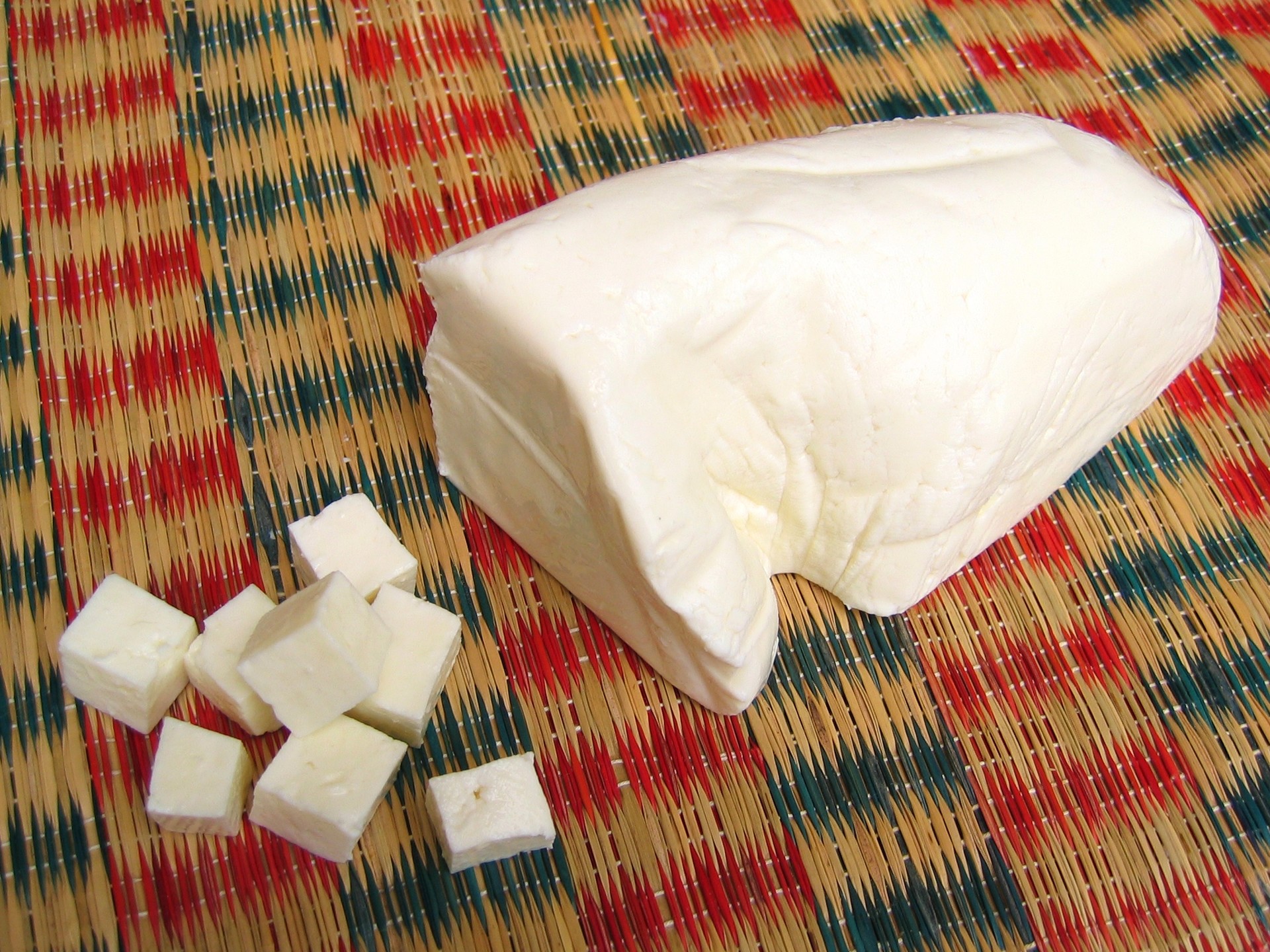
Ingredients
- Raw rice - 1 cup
- Parboiled rice - 1 cup (different rice types complement the crispness and softness, if you don't have both, you can use the same rice but just add half a tablespoon of cornflour and 2 tablespoons of maida flour)
- Paneer - 1 cup
- Green chillies - 2 (adjust according to your taste) finely chopped
- Salt
- Cilantro finely chopped - 1 teaspoon
- Oil to roast
Method
- Soak both the raw rice and parboiled rice in water for two hours.
- In the meantime, grate or break paneer in to very small pieces.
- Now grind the soaked rice into a fine paste of a pouring consistency (they should be finely grinded) and then add salt to it.
- After that, add the small pieces of paneer, finely chopped Coriander (Cilantro), finely chopped green chillies and mix them well, the batter for the dosa is now ready.
- Take a heavy bottom tawa (pan) and, using a ladle, pour the batter in the tawa, wait for the dosa to get browned at one side and flip it. Once the dosa gets fully cooked, you can enjoy it with some onion chutney, coconut chutney or sambar, anything of you choice.
These dosas are made thin and not too thick like uthappams, so pour it with a medium thickness. If you wish to ferment the batter, you can ferment it very well by keeping it in a warm place for 8-9 hours (overnight). If the temperature in your country is too cold, you can keep it in the oven with only the lights on, do not switch on the heat!
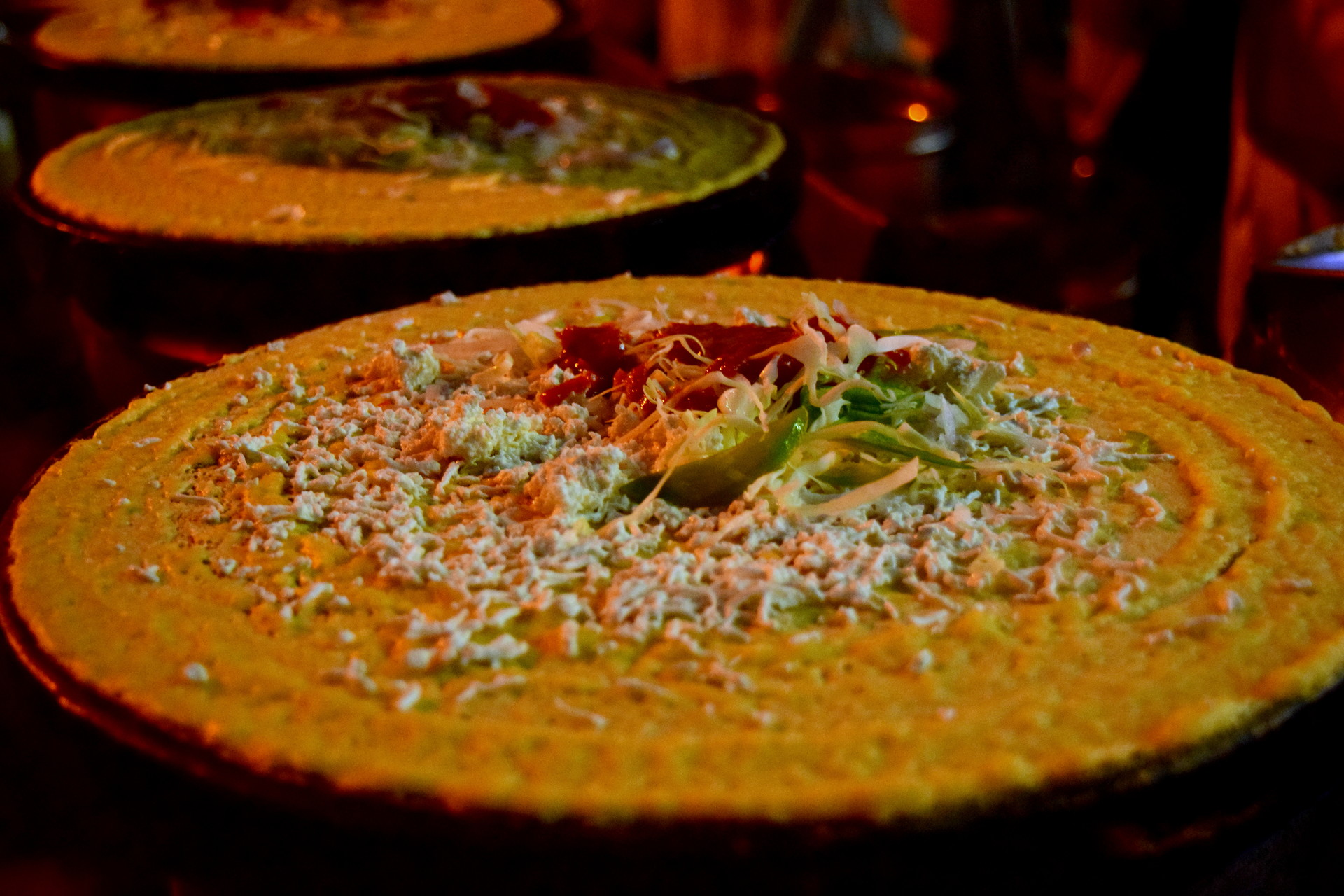
***
2. Palak Dosa/Spinach Crepe
Introduction
I am pretty sure that kids will always run away just as soon as they hear the word "greens" despite of explaining them its health benefits. Usually it is really difficult for small children to eat something that is not tasty, so they never touch the food which you make using greens, neither with rice nor with roti or chappathi. When I was a child I used to dodge my mother a lot and I would do anything it takes to skip the greens or the whole lunch itself, to be more honest. So before going in with the topic of how to make the kids eat greens, let me tell you all some nutritional facts about greens, spinach here in particular:
- Spinach is a rich source of vitamin A, so it reduces the risk of eye related problems. On a recent research it has been found out that the deficiency of vitamin A has lead to make very small children to wear spectacles and have infant eye problems. Vitamin A also protects the eyes from damaging ultraviolet radiations.
- It is rich in pottassium and has low sodium, so it can be consumed by every age group and it reduces the risk of hypertension.
- The antioxidant properties which spinach has will reduce the risk of getting a heart attack, stroke, artheroscelerosis, etc.
- It has been proved that spinach reduces cancer risk by 34%, and it especially is very good for consumption by women because of the presence of vitamin C, folate, tocopherol, chlorophyllin, fibres and folic acid which help to fight against breast, uterus and cervical cancer.
- It has an enormous amount of iron content, magnesium, etc., so this makes it ideal and very helpful for pregnant women because it will enhance red blood cell production.
- A low cholesterol content and high fibre content will also serve as an excellent diet food. Just 30 grams of spinach contain approximately 850 milligrams of proteins and 650 milligrams of dietary fibre.
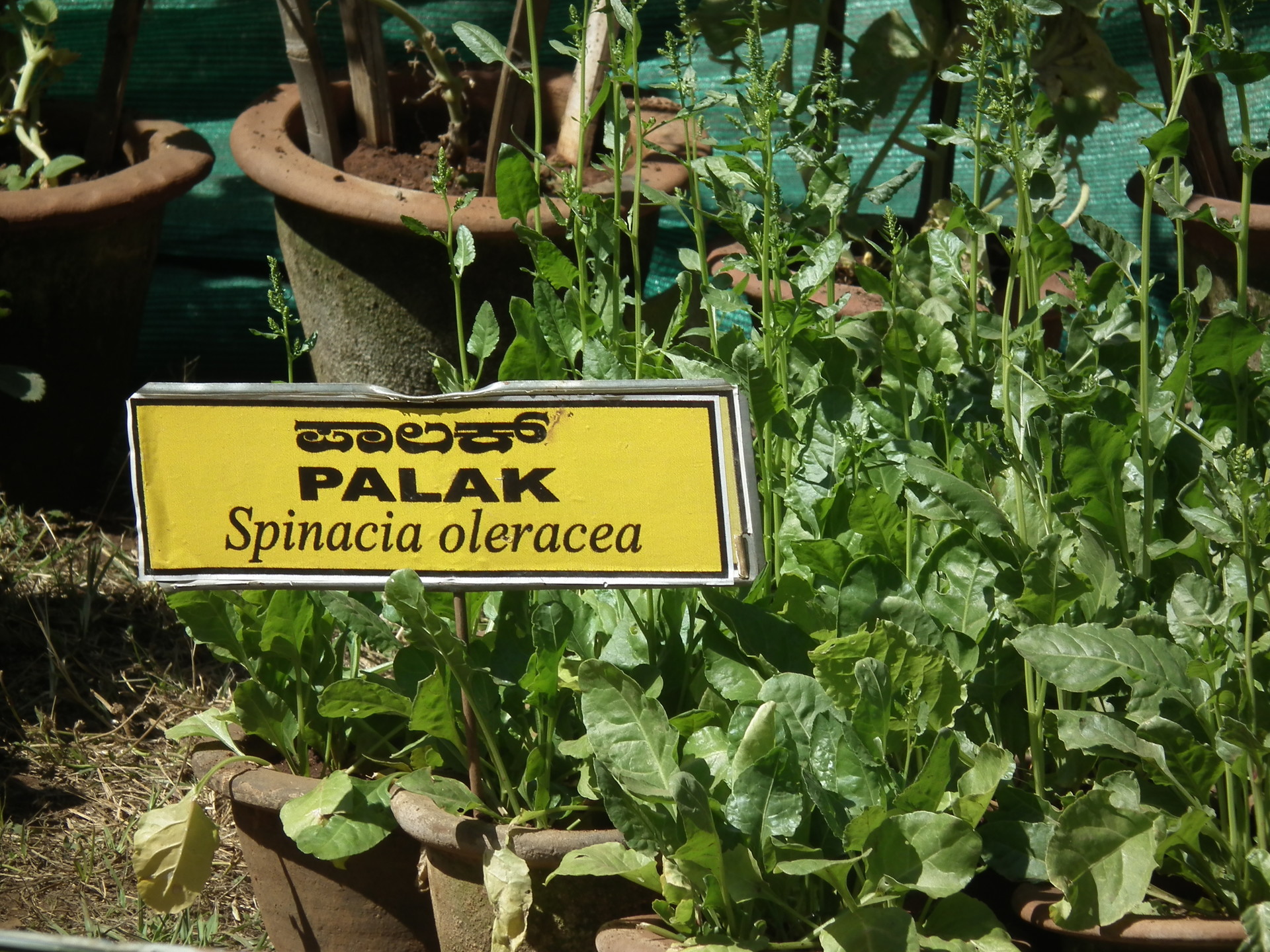
Ingredients
- Raw rice - 1 cup
- Black gram (urad dhal) - 1 tablespoon (use skinless gram)
- Palak/Spinach - 1 cup, finely chopped
- Green chillies - 3
- Hing/Asafoetida - 1 teaspoon
- Salt to taste
- Oil to be drizzled
Method
- Soak raw rice and urad dhal (black gram) in water, use cold water for better result, for about two to four hours.
- Add to the soaked mixture, palak (spinach), hing and green chillies, and grind them into a very smooth thick paste.
- Add salt to taste. This batter should obligatorily ferment for 8-9 hours (overnight). The fermentation will be ready when the quantity of batter has doubled overnight.
- Once it is done, mix the batter well and start making dosas and, trust me, they will taste awesome. I made them with ghee this time and they were more than awesome to taste. We use a small amount of black gram (urad) because of the high water content in palak.
Kids will love it and, more particularly, they will love that the taste of palak won't be felt in the dosa. For an excellent kid recipe use boiled spinach with stock (stock can be used to soak rice and gram and for grinding as well).
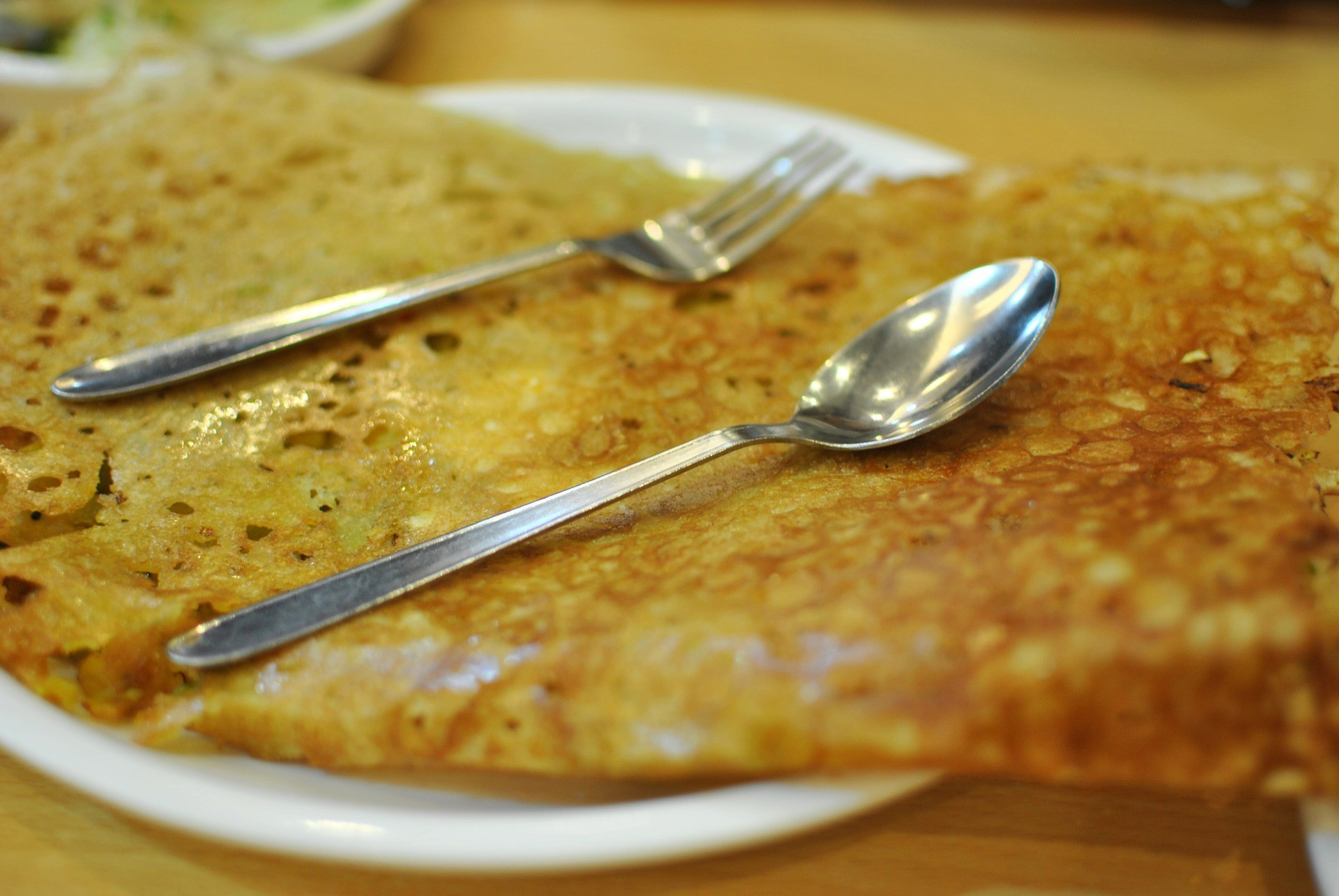
***
3. Moringa Dosa/Drumstick Leaves Crepe
Introduction
The moringa is one of the plants which was in the backyard of everybody's house in my town. It is believed that the moringa plant itself possess some unique nutritional values/qualities that hold promise to millions of impoverished communities around the world.
- The leaves have excellent protein content, and the proteins which form its cell walls are very rare to be found in other herbs and green leafy vegetables. About 100 grams of the leaves yield 9. 8 grams of proteins, which is about 17. 5% of the daily required levels. The dried and powdered moringa leaves are indeed a much concentrated source of many quality amino acids.
- The leaves and the growing tips of moringa are an excellent source of vitamin C. Research studies have shown that the consumption of fruits and vegetables rich in vitamin C helps the body to develop immunity against infectious agents, and scavenge the harmful oxygen free radicals. Furthermore, its leaves are a fine source of minerals like calcium, copper, iron, manganese, zinc, selenium and magnesium. Iron alleviates anemia. Calcium is required for bone strengthening. Zinc plays a vital role in hair growth, spermatogenesis, and skin health.
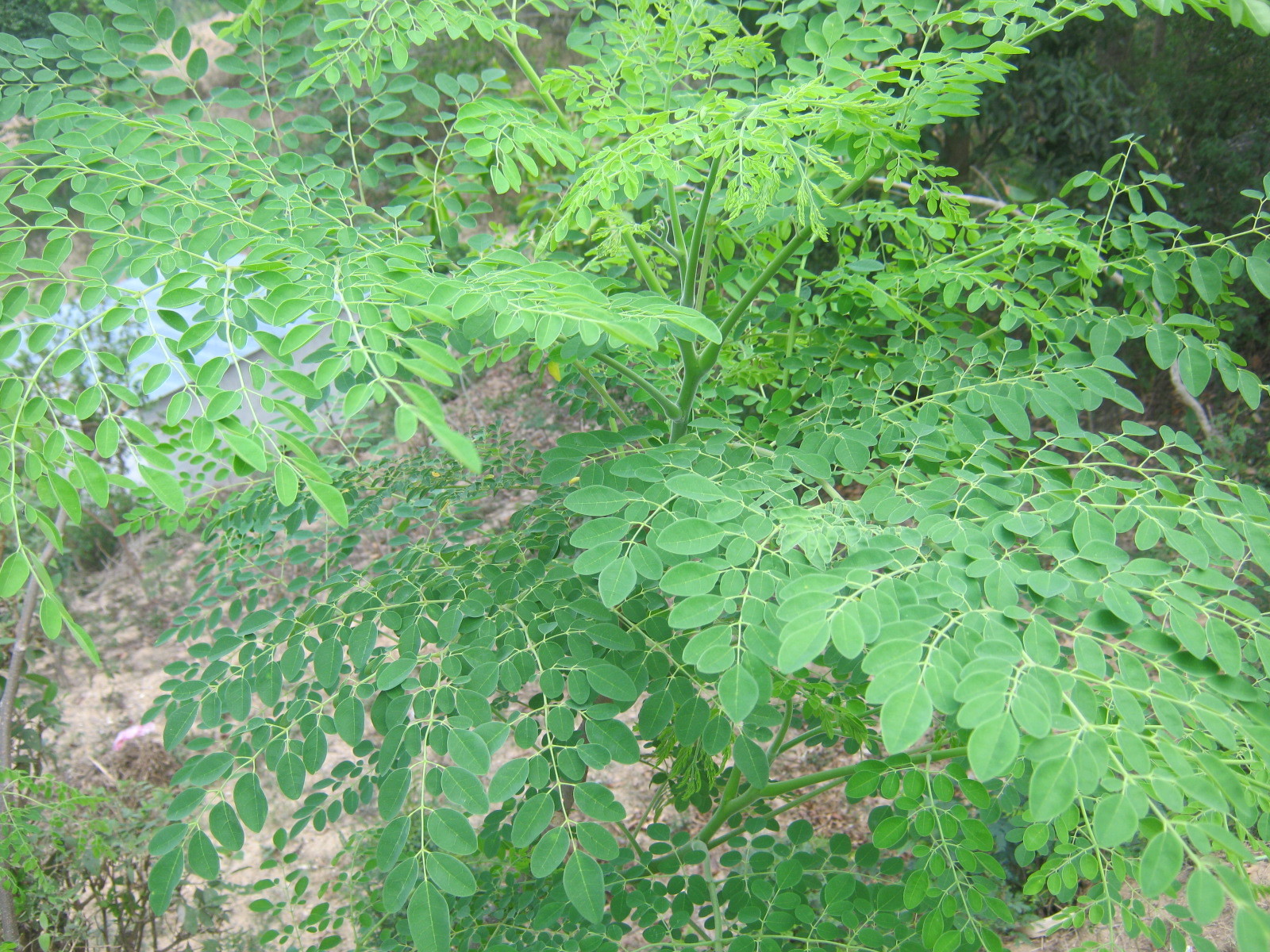
Ingredients
- Toor dhal - Half a cup
- Chickpeas (split) or gram dhal - Half a cup
- Black gram (urad dhal) - 1 tablespoon
- Raw rice - 1 cup
- Parboiled rice - 1 cup
- Moringa or drumstick leaves - 1 cup (in case of dried powder use less than three fourths of a cup)
- Coconut grated - 1 quarter of a cup (you can also use dried coconut)
- Red dried chillies - 6, adjust number according to your taste
- Hing/Asafoetida - 1 teaspoon
- Salt to taste
- Oil for drizzling the dosa (or butter or ghee, is all your choice)
Method
- Soak all the grams (lentils), rice and dried chillies together for two hours.
- In a pan, pour a tablespoon of ghee or oil and slightly sauté the moringa leaves (do make sure not to burn them).
- Now grind the soaked mixture (rice, lentils and chillies) with the coconut and make a paste (this should not be mashed smoothly). To this, add salt to taste and hing.
- Now to this grinded batter add the sauted moringa leaves and make dosas with this batter.
Please note that when you make the dosas make a hole in the center and add a little oil in it, in this way the inside of the "ada" (lentil mix) will also cook better. And do not hurry and let the dosas get roasted nice and brown before serving it, to help them to be more crispy. Since we have added sautéed moringa leaves and they won't do any unexpected changes to your gastrointestinal tract, sautéing the moringa leaves is a must.
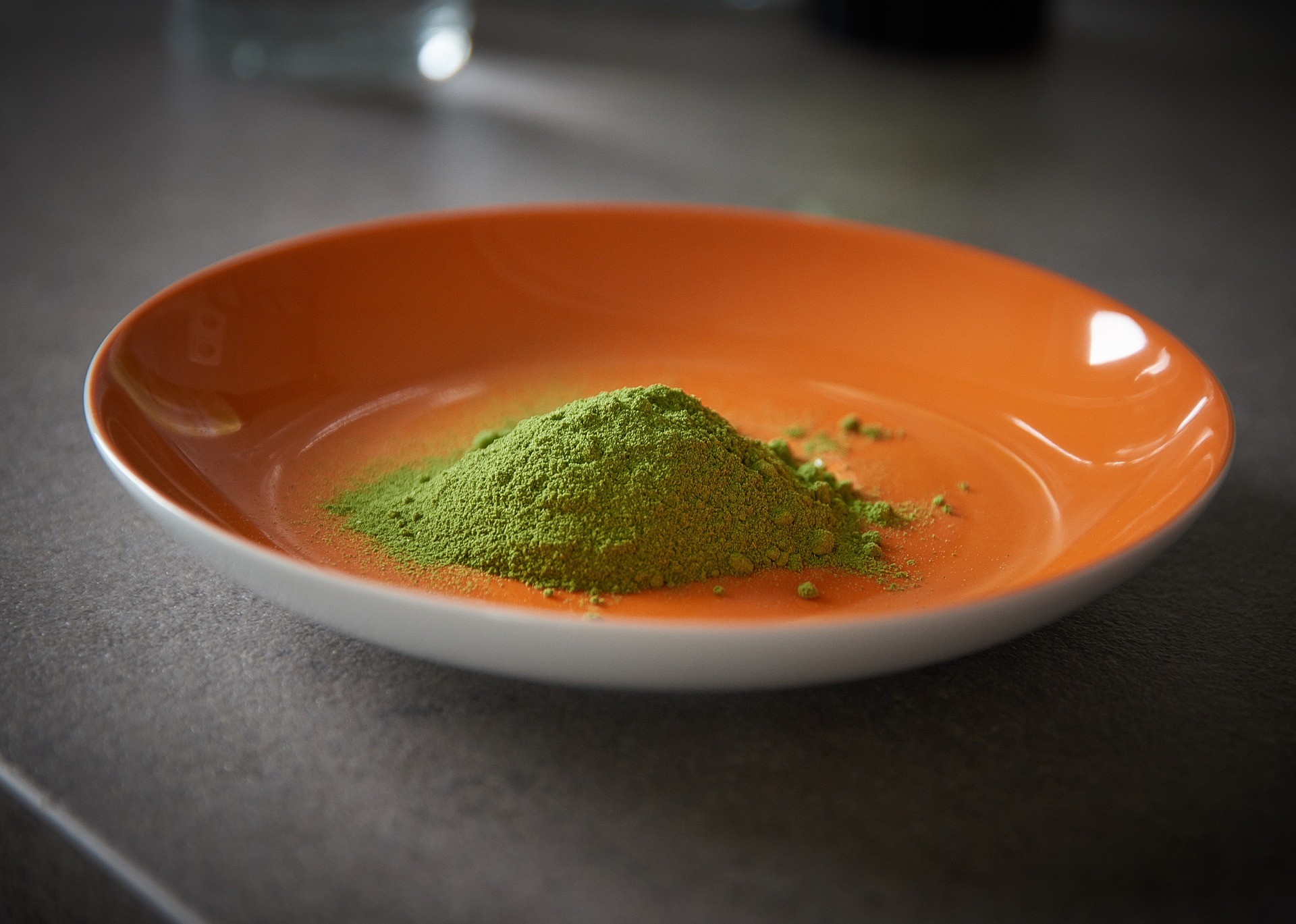
Moringa powder. Source
***
4. Mixed Lentil Crepes
Ingredients
- Green gram - 1 quarter of a cup
- Black gram - 1 quarter of a cup
- Whole chickpeas - 1 quarter of a cup
- Split chickpeas - 1 quarter of a cup
- Raw rice - 1 quarter of a cup
- Kollu (Horse gram) - 1 quarter of a cup
- Dried maize - 1 quarter of a cup
- Fresh maize (corn) - 1 quarter of a cup
- Sesame seeds (white) - 1 tablespoon
- Curry leaves - 5 to 6 leaves
- Green chillies - 3
- Ginger - A small piece (less than 2 grams)
- Red chillies - 6
- Salt to taste
- A pinch of hing
- Oil for drizzling the dosa (or butter or ghee, is all your choice)
- Cilantro fine chopped - a little
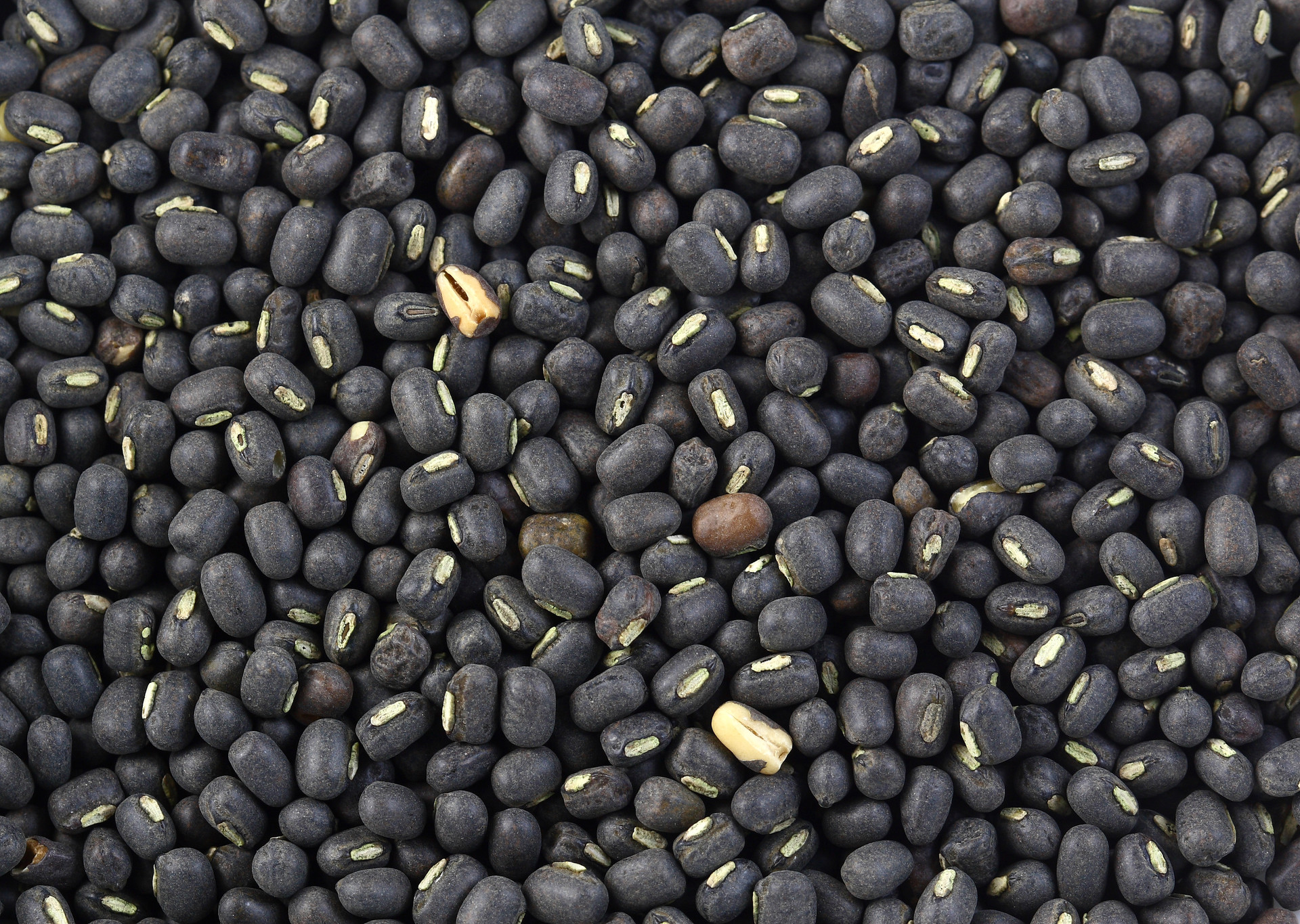
Black gram. Source
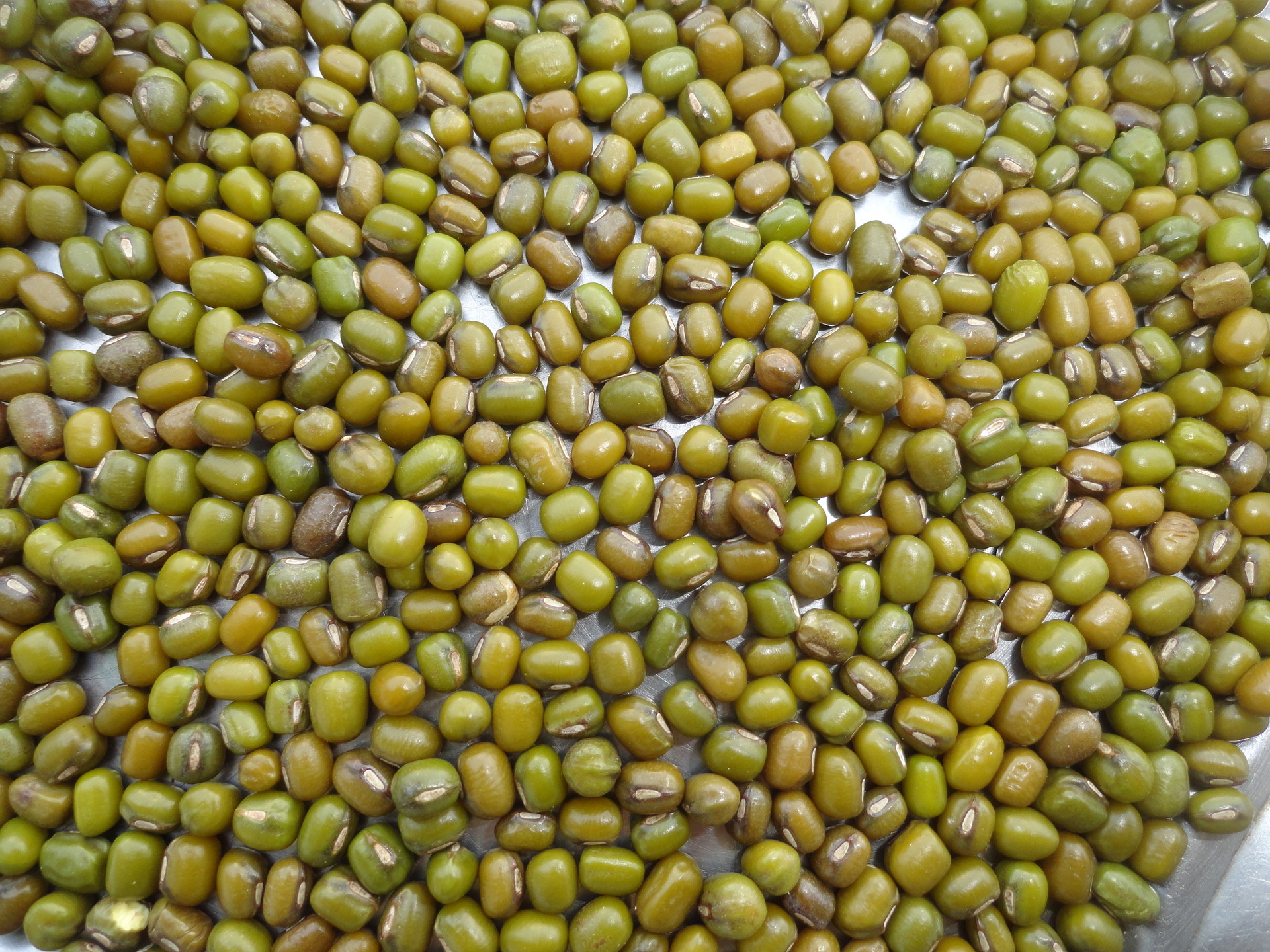
Green gram. Source
Method
- Add all the lentils and rice together wash well and soak them in water for 5 hours.
- Then grind all the soaked ingredients with red chillies, green chillies, ginger, curry leaves, hing and salt and mash it all together.
- Add the chopped cilantro and make thin dosas. Ginger will increase the digestion speed so you don't need to worry!
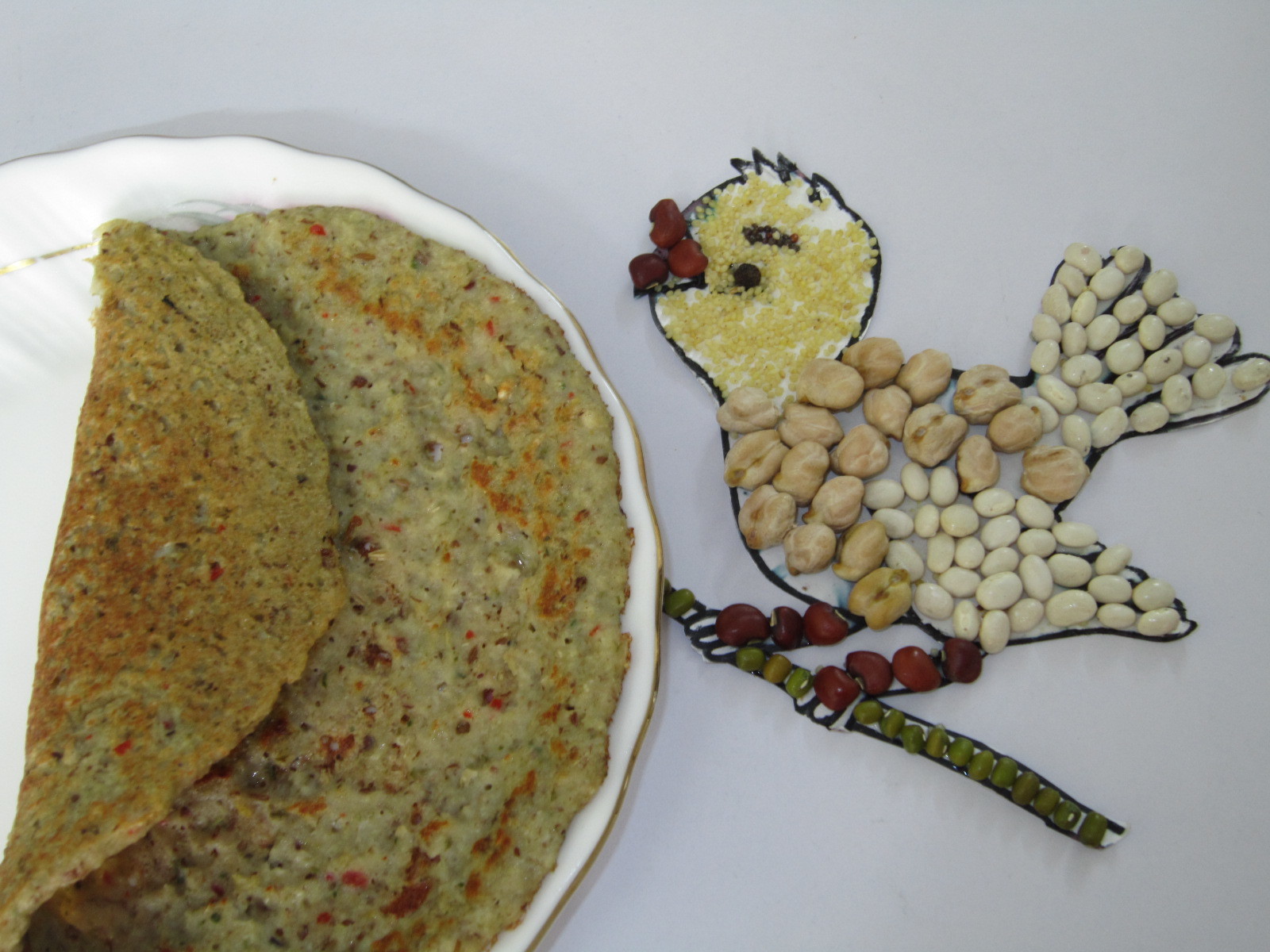
***
5. Ragi Dosa
Ingredients
- Water - 1 and a half cups
- Ragi flour - 1 cup
- Rice flour - 1 cup
- Grated coconut - 2 tablespoons
- Jaggery - half a cup
- Cardamom powder - 1 quarter of a teaspoon
- Grated or broken cashews - 2 tablespoons
- Ghee (clarified butter) - To fry
Method
- Pour in a pan the water and jaggery and bring them to boil. Wait till the jaggery gets dissolved.
- Now filter the jaggery out to remove mud and keep the syrup aside (no "string consistency" needed).
- Once the mixture starts to cool down a little add the ragi flour, rice flour, coconut gratings and cardamom powder and make a batter of pouring consistency.
- Now pour it in a tawa (frying pan) and make sweet dosas.
The amount of water and sweetness can be adjusted according to you taste. Sugar patients can use sugar-free products or can make a spicy version of this with cumin seeds and chilli powder, and eat it with chutney or sambar.
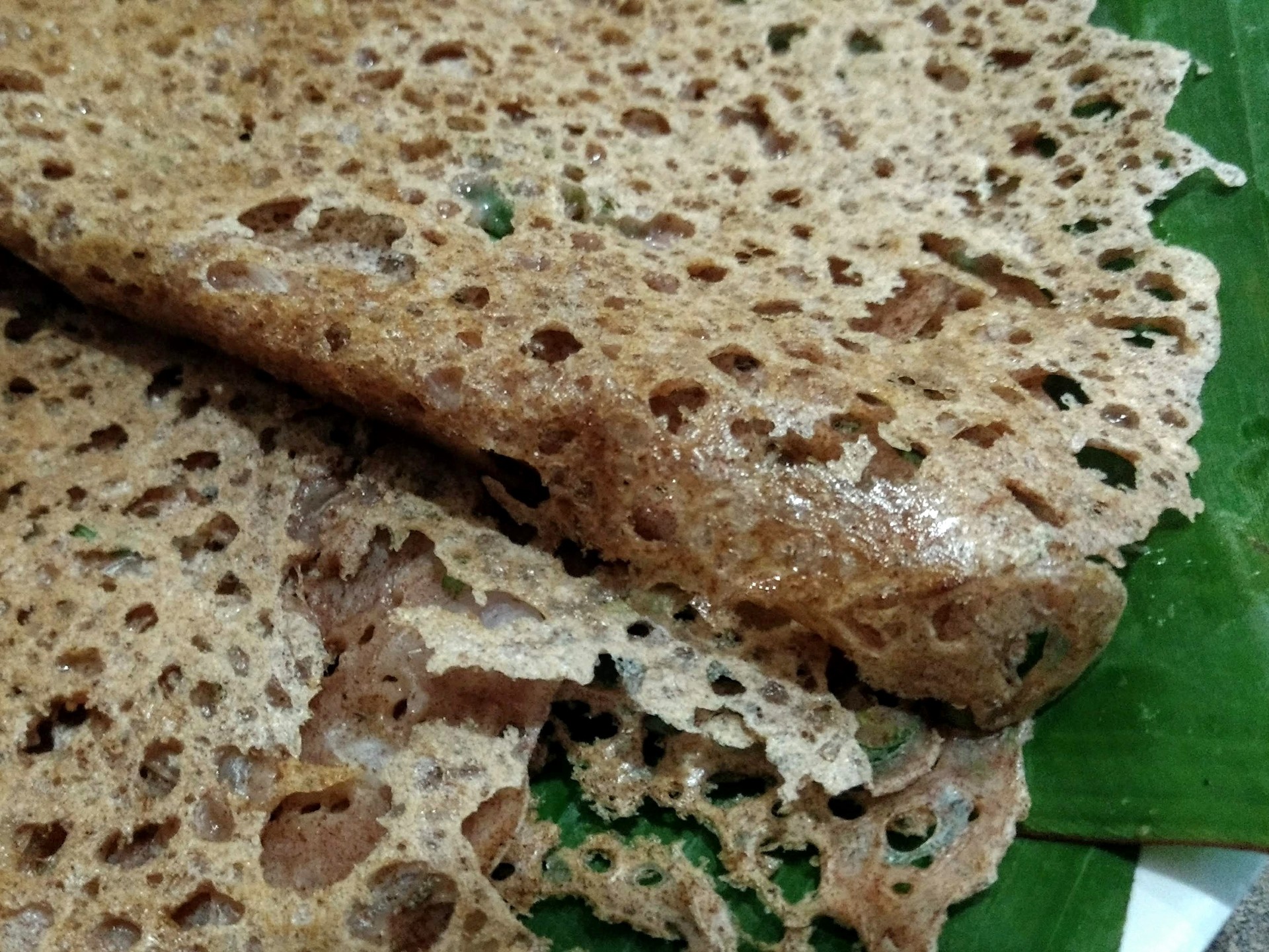
***
6. Sponge Dosa/No fermentation Dosa
Ingredients
- Parboiled rice - 3 cups
- Raw rice - 1 cup
- Black gram (urad dhal) - Half a cup
- Fenugreek seeds - 1 teaspoon
- Salt to taste
- Oil for drizzling the dosa (or butter or ghee, is all your choice)
Method
- Soak the raw rice, the parboiled rice and the black gram for 3-5 hours and then grind them into a fine smooth paste.
- Add salt to it. Now you can make thick dosas and serve them with coriander chutney*.
This is a non-fermented dosa so they will be spongy instead of being crispy.
*To make the coriander chutney, take 2 cups of coriander, 4 green chillies, half an inch (≈ 1, 3 cm) of tamarind strip and salt to taste. Now grind them all together and, if you wish, sauté some mustard and split black gram (urad) and add them to the chutney. The combination will be awesome!
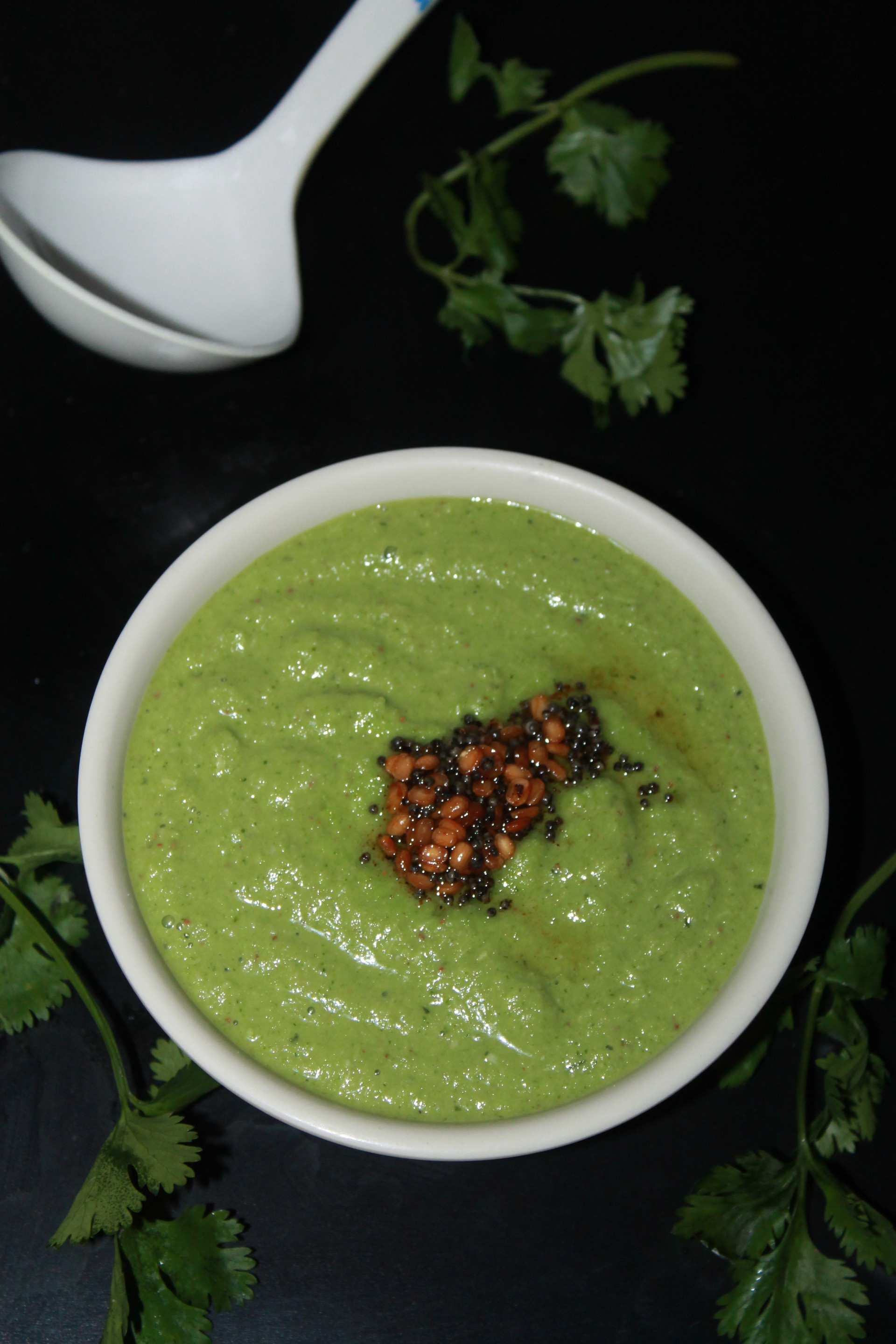
Coriander chutney. Source
***
7. Perumal Kovil Dosa
Ingredients
- Raw rice - 1 cup
- Black gram (urad dhal) - 1 cup
- Black pepper - 1 teaspoon
- Whole cumin seeds - 1 teaspoon
- Dry ginger powder (Sukku) - 1 teaspoon
- Curry leaves - 1 teaspoon
- Salt to taste
- Oil for drizzling the dosa (or butter or ghee, is all your choice)
Method
- Soak rice and black gram together for 3-5 hours and grind them a little coarse, but smooth, to make dosas. Do not grind it like adai dosa batter and let it ferment overnight.
- Now slightly roast all the other ingredients, grind them (don't make a fine powder, make it coarse) and add them to the batter.
- Pour the batter on a dosa tawa and make dosas a little soft and thick. This dosas will not need too much oil, but roast them until they are brown on both sides.
They will taste awesome. This is the dosa which is served in Perumal Temples as a prasadham/prasadam during the "Thesigar saatrumurai utsavam". You can make some variations in this dosa by adding grated vegetables, paneer, etc. But this is the traditional method.
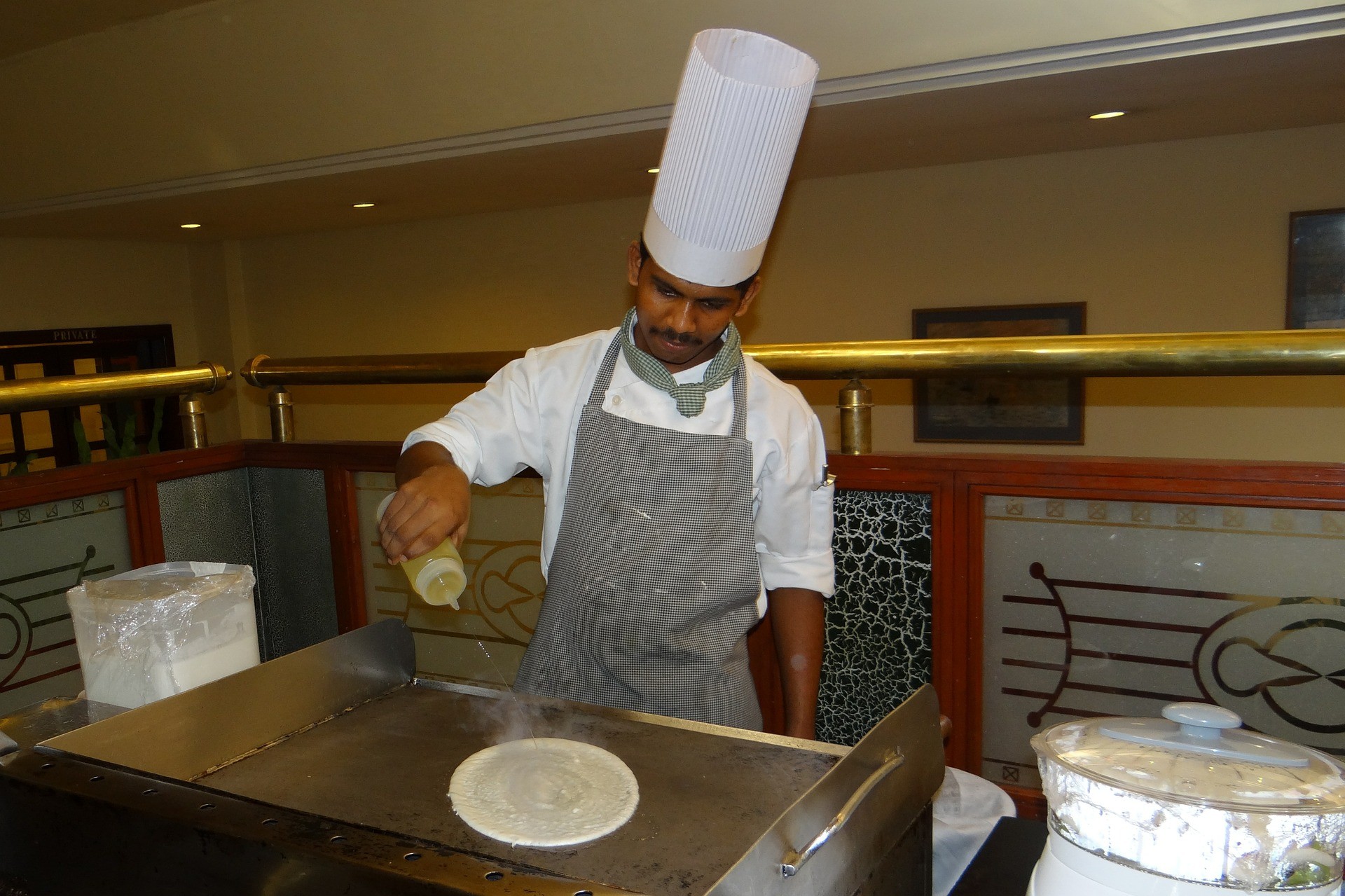
Cook making a dosa. Source
***
8. Fruit Dosa
Ingredients
- Raw rice - 1 cup
- Diced fruits like apple, orange, grapes, ananas (pineapples), bananas, pomegranate, papaya or any fruits of your choice - 1 cup or 1 and 1/2 cup, depending on your taste
- A pinch of salt
- Oil for drizzling the dosa (or butter or ghee, is all your choice)
Method
- Soak raw rice for two hours.
- Now drain out all the excess of water, add the diced fruits along with salt, and grind them into a fine paste.
- Make thin dosas and serve them with honey.
If you wish to make it spicy you can add a quarter of a teaspoon of black pepper powder. This dosa will have all tastes blended in it. Do try it out.

Chennai banana vendors, India. Source
***
9. White Dosa
Ingredients
- Raw rice - 1 cup
- Sago (Javvarisi) - 1 cup
- Sour cream or sour curd - 1 cup
- Green chillies - 2
- Salt to taste
- A pinch of hing
- Cilantro finely chopped - a little (optional)
- Oil for drizzling the dosa (or butter or ghee, is all your choice)
Method
- Wash and soak rice in water for 4 hours.
- Soak the sago in sour curd for two hours.
- Then, add all the remaining ingredients to the soaked rice and make a smooth paste. To this, add the sour curd with sago and mix well.
- Now you can make the dosas.
The most important thing about this dosa is that it can be consumed by even aged people. Take in account that the sago has to be soaked nicely before adding it into the batter. This dosa will cool your body.
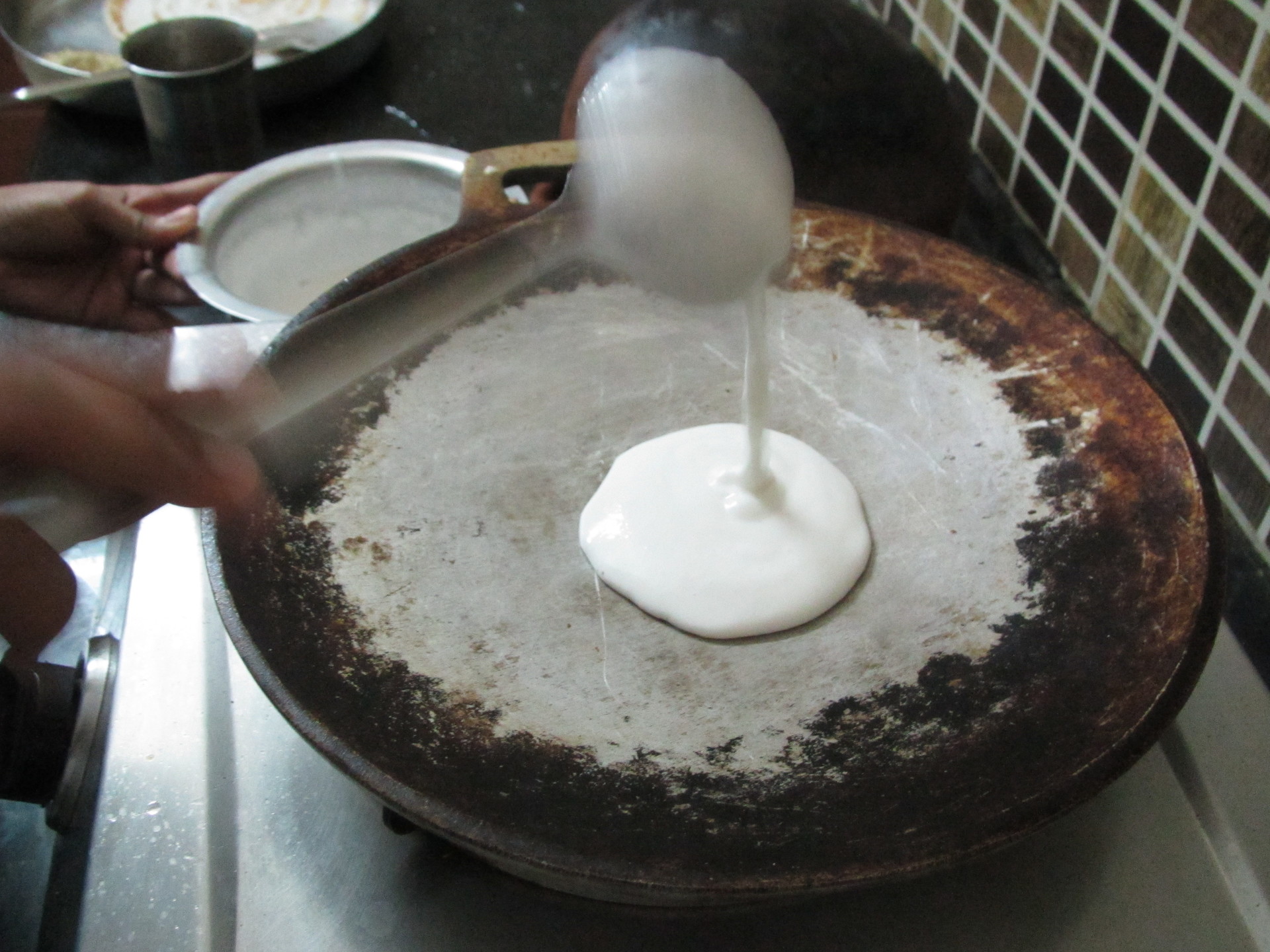
Dosa cooking. Source
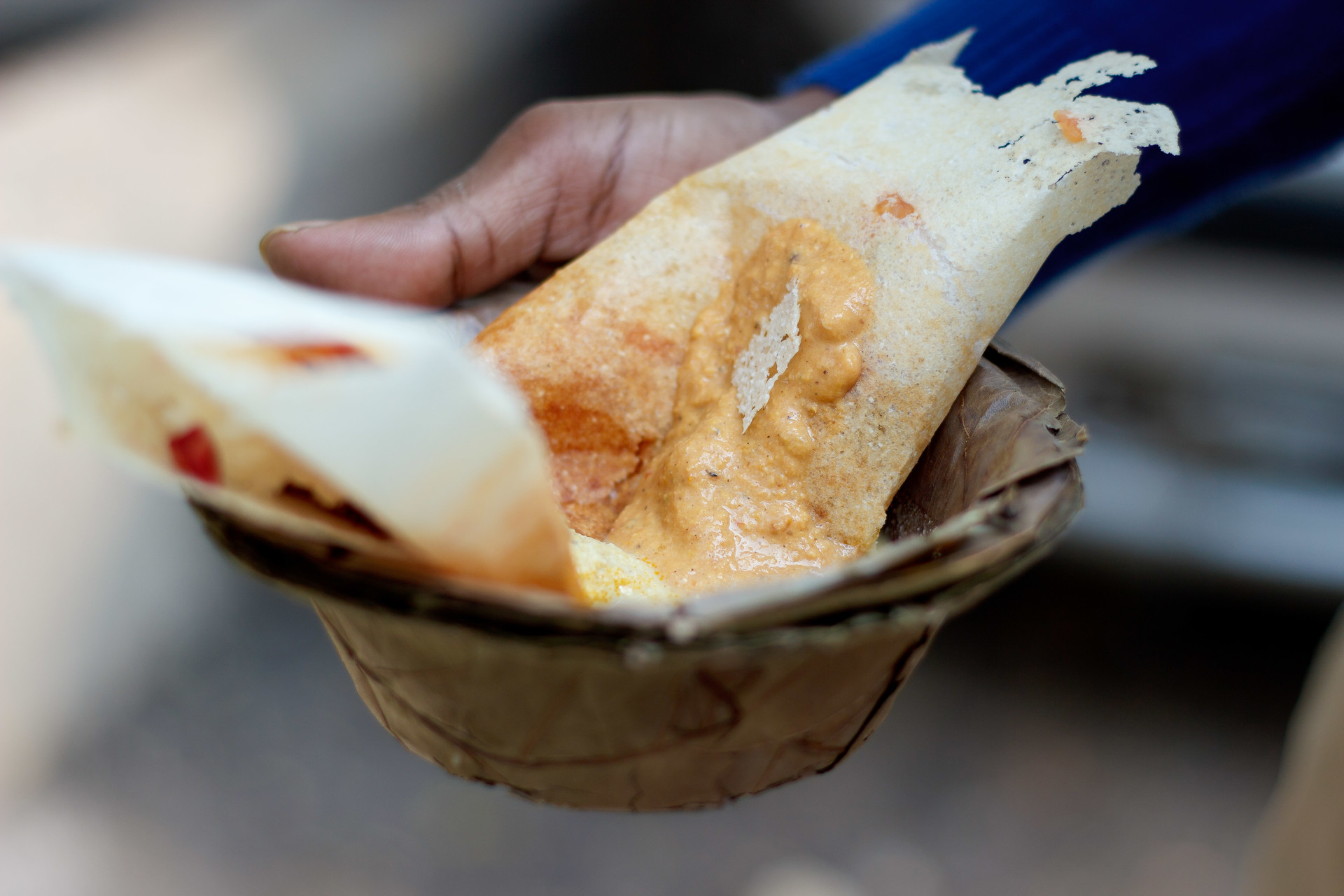
Enjoy!
Photo gallery
Content available in other languages
- Español: Crepes Indias
Want to have your own Erasmus blog?
If you are experiencing living abroad, you're an avid traveller or want to promote the city where you live... create your own blog and share your adventures!
I want to create my Erasmus blog! →


















Comments (0 comments)